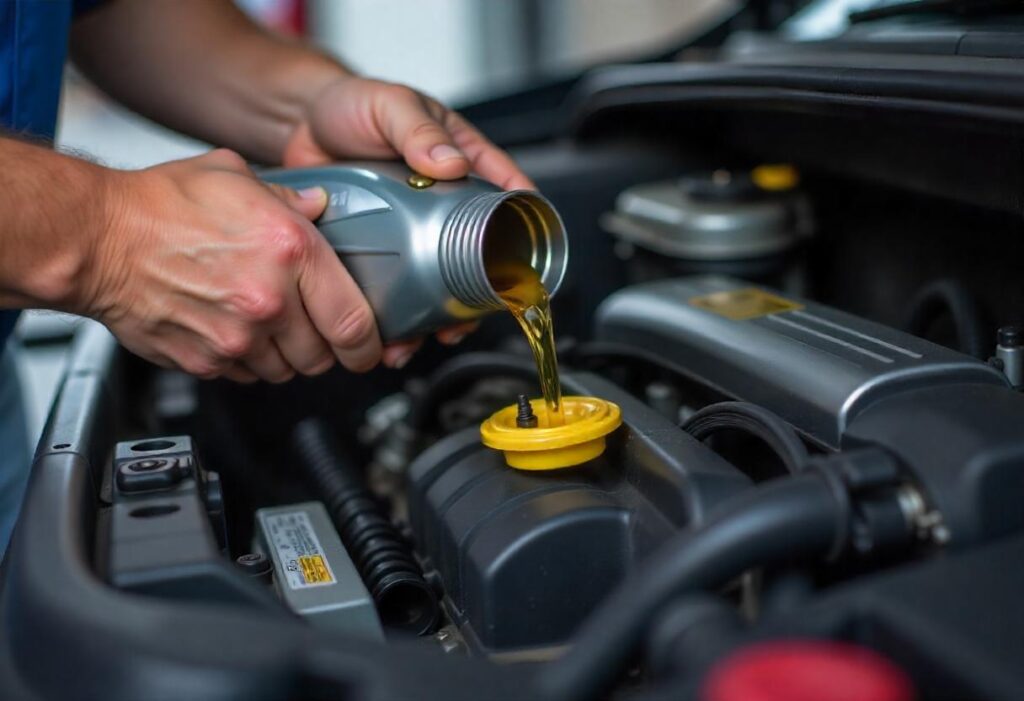Introduction
Changing your engine oil is one of the simplest yet most important maintenance tasks to keep your car running smoothly. Not only does it extend your engine’s life, but doing it yourself can also save you money compared to a shop visit. In this step-by-step guide, we’ll walk you through how to change engine oil at home, even if you’re a complete beginner. With the right tools and a little time, you’ll master this essential DIY skill and keep your vehicle in top shape.
Why Changing Engine Oil Matters
Engine oil lubricates moving parts, reduces friction, and prevents overheating in your engine. Over time, oil breaks down, collects debris, and loses its effectiveness, which can lead to engine wear or failure. Regular oil changes—typically every 5,000-7,500 miles—ensure optimal performance and longevity. Doing it yourself can save you $30-$70 per change, making it a cost-effective skill to learn.
Tools and Materials You’ll Need
- Tools:
- Jack and jack stands
- Oil filter wrench
- Socket wrench (for drain plug)
- Funnel
- Oil drain pan
- Gloves and safety glasses
- Materials:
- New engine oil (check your manual for the correct type, e.g., 5W-30)
- New oil filter
- Drain plug washer (if needed)
- Rags or paper towels
Step-by-Step Guide: How to Change Engine Oil at Home
- Prepare Your Vehicle
- Park on a flat surface, engage the parking brake, and run the engine for 2-3 minutes to warm the oil (it drains better when warm).
- Turn off the engine and gather your tools.
- Lift the Vehicle
- Use a jack to lift the front of the car and secure it with jack stands. Ensure it’s stable before proceeding.
- Safety Tip: Never work under a car supported only by a jack.
- Drain the Old Oil
- Place the oil drain pan under the drain plug (usually under the engine).
- Use a socket wrench to remove the drain plug, letting the old oil drain completely (5-10 minutes).
- Inspect the drain plug washer—if damaged, replace it.
- Remove the Old Oil Filter
- Locate the oil filter (often a cylindrical component near the engine).
- Use an oil filter wrench to loosen and remove it. Be prepared for some oil to drip.
- Tip: Place a rag under the filter to catch spills.
- Install the New Oil Filter
- Rub a thin layer of new oil on the rubber gasket of the new filter to ensure a good seal.
- Screw the new filter on by hand until snug, then tighten it with the wrench (about ¾ turn—don’t overtighten).
- Replace the Drain Plug
- Reinstall the drain plug with a new washer (if needed) and tighten it to the manufacturer’s torque spec (typically 25-30 ft-lbs).
- Double-check for leaks before proceeding.
- Lower the Vehicle
- Remove the drain pan, lower the car off the jack stands, and set it back on the ground.
- Add New Engine Oil
- Open the hood, remove the oil filler cap, and place a funnel in the opening.
- Pour in the recommended amount of new oil (check your manual—usually 4-6 quarts).
- Replace the cap securely.
- Check the Oil Level
- Start the engine and let it run for 1-2 minutes, then turn it off.
- Check the dipstick to ensure the oil level is between the “min” and “max” marks. Add more if needed.
- Dispose of the Old Oil Properly
- Pour the used oil into a sealed container and take it to a recycling center or auto shop.
- Note: Never dump oil in the trash or down a drain—it’s illegal and harmful to the environment.
Common Mistakes to Avoid
- Using the Wrong Oil: Always check your manual for the correct viscosity (e.g., 5W-20 vs. 10W-30).
- Overtightening the Filter or Plug: Can cause leaks or damage threads.
- Forgetting to Check for Leaks: After lowering the car, look under it to ensure no oil is dripping.
Benefits of a DIY Engine Oil Change
- Cost Savings: Shops charge $40-$100 per change; DIY costs $20-$40.
- Control: You choose the oil and filter quality.
- Convenience: No need to schedule an appointment.
Conclusion
Learning how to change engine oil at home is a valuable skill that keeps your car running smoothly while saving you money. By following these steps—draining the old oil, replacing the filter, and adding new oil—you’ll ensure your engine stays protected. Make oil changes a regular part of your maintenance routine for a healthier, longer-lasting vehicle.
Call-to-Action:
Tried this DIY oil change? Share your experience in the comments, and check out our guide on choosing the best engine oil!

